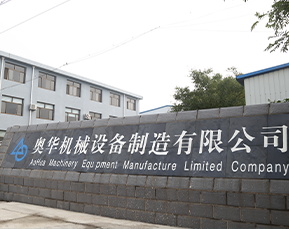 Afrikaans
Afrikaans  Albanian
Albanian  Amharic
Amharic  Arabic
Arabic  Armenian
Armenian  Azerbaijani
Azerbaijani  Basque
Basque  Belarusian
Belarusian  Bengali
Bengali  Bosnian
Bosnian  Bulgarian
Bulgarian  Catalan
Catalan  Cebuano
Cebuano  Corsican
Corsican  Croatian
Croatian  Czech
Czech  Danish
Danish  Dutch
Dutch  English
English  Esperanto
Esperanto  Estonian
Estonian  Finnish
Finnish  French
French  Frisian
Frisian  Galician
Galician  Georgian
Georgian  German
German  Greek
Greek  Gujarati
Gujarati  Haitian Creole
Haitian Creole  hausa
hausa  hawaiian
hawaiian  Hebrew
Hebrew  Hindi
Hindi  Miao
Miao  Hungarian
Hungarian  Icelandic
Icelandic  igbo
igbo  Indonesian
Indonesian  irish
irish  Italian
Italian  Japanese
Japanese  Javanese
Javanese  Kannada
Kannada  kazakh
kazakh  Khmer
Khmer  Rwandese
Rwandese  Korean
Korean  Kurdish
Kurdish  Kyrgyz
Kyrgyz  Lao
Lao  Latin
Latin  Latvian
Latvian  Lithuanian
Lithuanian  Luxembourgish
Luxembourgish  Macedonian
Macedonian  Malgashi
Malgashi  Malay
Malay  Malayalam
Malayalam  Maltese
Maltese  Maori
Maori  Marathi
Marathi  Mongolian
Mongolian  Myanmar
Myanmar  Nepali
Nepali  Norwegian
Norwegian  Norwegian
Norwegian  Occitan
Occitan  Pashto
Pashto  Persian
Persian  Polish
Polish  Portuguese
Portuguese  Punjabi
Punjabi  Romanian
Romanian  Russian
Russian  Samoan
Samoan  Scottish Gaelic
Scottish Gaelic  Serbian
Serbian  Sesotho
Sesotho  Shona
Shona  Sindhi
Sindhi  Sinhala
Sinhala  Slovak
Slovak  Slovenian
Slovenian  Somali
Somali  Spanish
Spanish  Sundanese
Sundanese  Swahili
Swahili  Swedish
Swedish  Tagalog
Tagalog  Tajik
Tajik  Tamil
Tamil  Tatar
Tatar  Telugu
Telugu  Thai
Thai  Turkish
Turkish  Turkmen
Turkmen  Ukrainian
Ukrainian  Urdu
Urdu  Uighur
Uighur  Uzbek
Uzbek  Vietnamese
Vietnamese  Welsh
Welsh  Bantu
Bantu  Yiddish
Yiddish  Yoruba
Yoruba  Zulu
Zulu Optimizing Conveyor Systems with Effective Belt Guide Rollers for Enhanced Performance
An Overview of Belt Guide Rollers
Belt guide rollers are essential components in various industrial applications, particularly in conveyor systems and material handling equipment. These rollers serve a critical function by ensuring that belts remain properly aligned and operate efficiently, reducing the risk of wear and tear while enhancing productivity. Understanding the design, function, and benefits of belt guide rollers can help industries better utilize this technology.
What are Belt Guide Rollers?
Belt guide rollers are cylindrical devices that are strategically placed alongside a conveyor belt. Their primary purpose is to maintain the proper tracking of the belt, preventing it from drifting off course. This drifting can lead to operational inefficiencies, increased maintenance costs, and, in severe cases, equipment failure. By guiding the belt, these rollers ensure that the material being transported remains securely in place and moves smoothly along the defined path.
The Design and Function
Belt guide rollers typically consist of a sturdy core material, often made from steel or durable plastic, covered with a resilient outer layer to withstand the rigors of heavy use. The design can vary based on the application, with rollers available in different diameters and widths to suit specific conveyor systems. Many modern belt guide rollers are also equipped with bearings that allow for smooth rotation, reducing friction and wear on both the rollers and the conveyor belt.
The placement of belt guide rollers is crucial. They must be positioned at strategic intervals along the conveyor system to provide effective support and guidance. Typically, they are located at the edges of the belt as well as at critical junctions where the belt may change direction. The correct installation of these rollers helps to ensure that the belt maintains its tension and does not sag or become misaligned during operation.
Benefits of Using Belt Guide Rollers
belt guide rollers

1. Improved Belt Tracking One of the primary benefits of using belt guide rollers is their ability to improve belt tracking. Proper alignment minimizes the risk of the belt drifting, which can cause damage to the belt and conveyor system.
2. Reduced Wear and Maintenance When belts are properly guided, they experience less friction and wear. This not only extends the lifespan of the conveyor belt but also reduces the need for frequent maintenance and replacement, offering significant cost savings over time.
3. Increased Efficiency When a belt is properly aligned, it operates more efficiently, allowing materials to move smoothly and quickly along the conveyor system. This increased efficiency can lead to higher productivity rates within manufacturing and distribution operations.
4. Enhanced Safety Misalignment of conveyor belts can pose safety hazards to workers and potentially lead to accidents. Belt guide rollers help mitigate these risks by ensuring that the belt remains securely in place.
5. Versatility Belt guide rollers are versatile and can be used in various industries, including mining, food processing, packaging, and pharmaceuticals. Their adaptability to different settings makes them a valuable asset in many industrial applications.
Conclusion
In conclusion, belt guide rollers play a vital role in the functionality and efficiency of conveyor systems. By ensuring proper belt alignment and reducing wear, these components contribute to smoother operations, decreased maintenance costs, and enhanced safety. As industries continue to seek ways to optimize their operations, investing in high-quality belt guide rollers can yield significant long-term benefits. Whether in heavy manufacturing or delicate material handling environments, belt guide rollers are a key element in the mechanics of modern industrial processes. Understanding their importance can help businesses operate more effectively and maintain competitive advantages in their respective markets.
-
Revolutionizing Conveyor Reliability with Advanced Rubber Lagging PulleysNewsJul.22,2025
-
Powering Precision and Durability with Expert Manufacturers of Conveyor ComponentsNewsJul.22,2025
-
Optimizing Conveyor Systems with Advanced Conveyor AccessoriesNewsJul.22,2025
-
Maximize Conveyor Efficiency with Quality Conveyor Idler PulleysNewsJul.22,2025
-
Future-Proof Your Conveyor System with High-Performance Polyurethane RollerNewsJul.22,2025
-
Driving Efficiency Forward with Quality Idlers and RollersNewsJul.22,2025





























